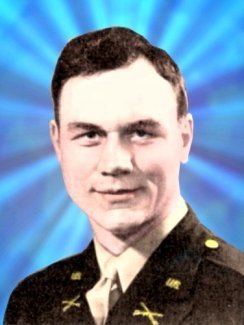Rank First Lieutenant | Name Gerry Kisters Died May 11, 1986 Unit 2nd Ard Division | |
 | ||
Born March 2, 1919Salt Lake City, Utah ( 1919-03-02 ) | ||
Allegiance United States of America | ||
Gerry Herman Kisters (March 2, 1919 – May 11, 1986) was a United States Army soldier and a recipient of the United States military's highest decoration—the Medal of Honor—for his actions in World War II.
Contents
Biography
Kisters joined the Army from Bloomington, Indiana in January 1941, and by July 31, 1943 was serving as a Sergeant in the 2nd Armored Division. On that day, near Gagliano, Sicily, he and an officer captured an enemy machine gun position. Kisters then went forward alone and, although wounded on his approach, single-handedly captured a second machine gun emplacement. He was subsequently promoted to second lieutenant and, on February 18, 1944, awarded the Medal of Honor.
Kisters reached the rank of first lieutenant before leaving the Army.
The Monroe County Airport is named Kisters Field in his honor.
He died at age 67 and was buried at Rose Hill Cemetery in Bloomington, Indiana.
Medal of Honor citation
Kisters' official Medal of Honor citation reads:
On 31 July 1943, near Gagliano, Sicily, a detachment of 1 officer and 9 enlisted men, including Sgt. Kisters, advancing ahead of the leading elements of U.S. troops to fill a large crater in the only available vehicle route through Gagliano, was taken under fire by 2 enemy machineguns. Sgt. Kisters and the officer, unaided and in the face of intense small arms fire, advanced on the nearest machinegun emplacement and succeeded in capturing the gun and its crew of 4. Although the greater part of the remaining small arms fire was now directed on the captured machinegun position, Sgt. Kisters voluntarily advanced alone toward the second gun emplacement. While creeping forward, he was struck 5 times by enemy bullets, receiving wounds in both legs and his right arm. Despite the wounds, he continued to advance on the enemy, and captured the second machinegun after killing 3 of its crew and forcing the fourth member to flee. The courage of this soldier and his unhesitating willingness to sacrifice his life, if necessary, served as an inspiration to the command.
